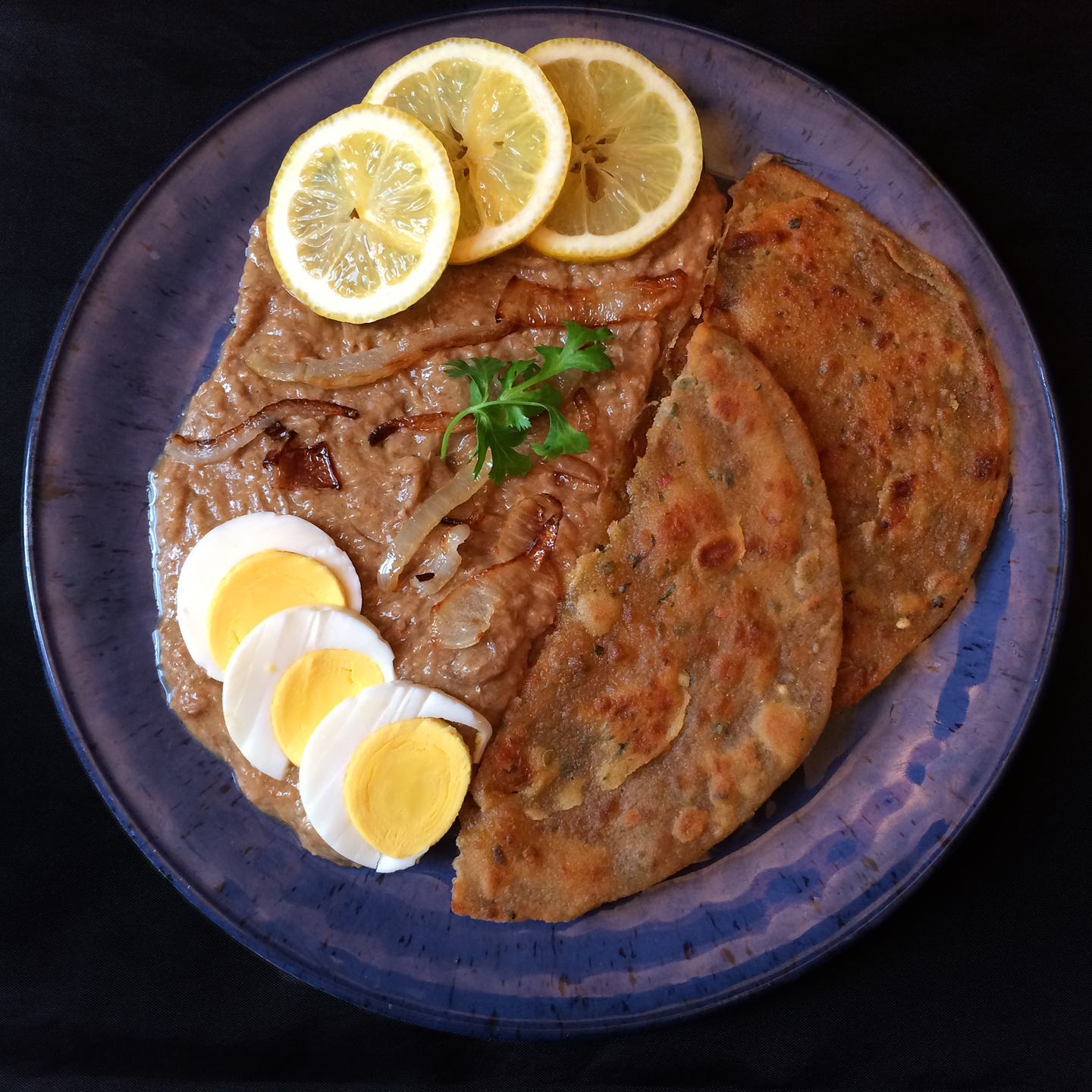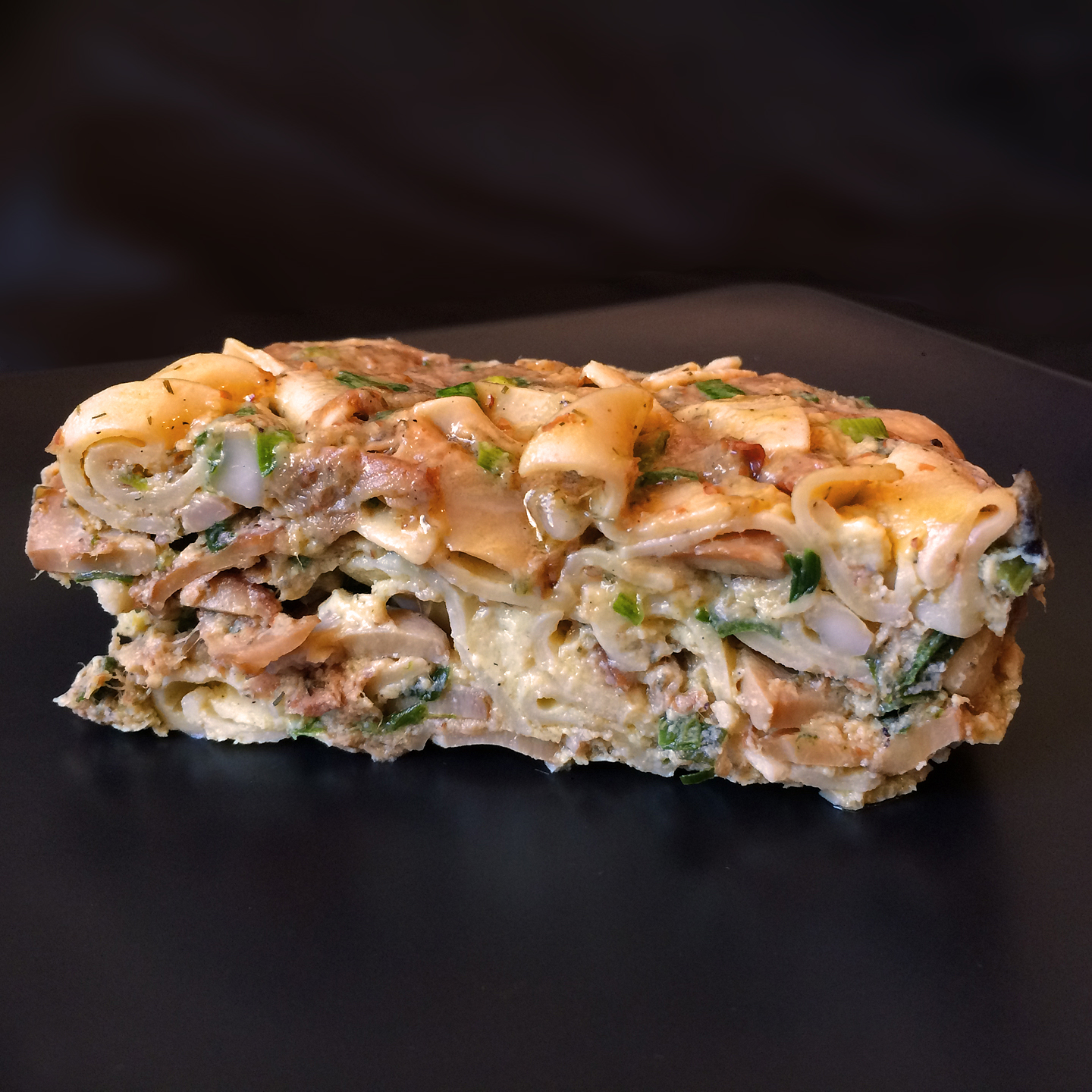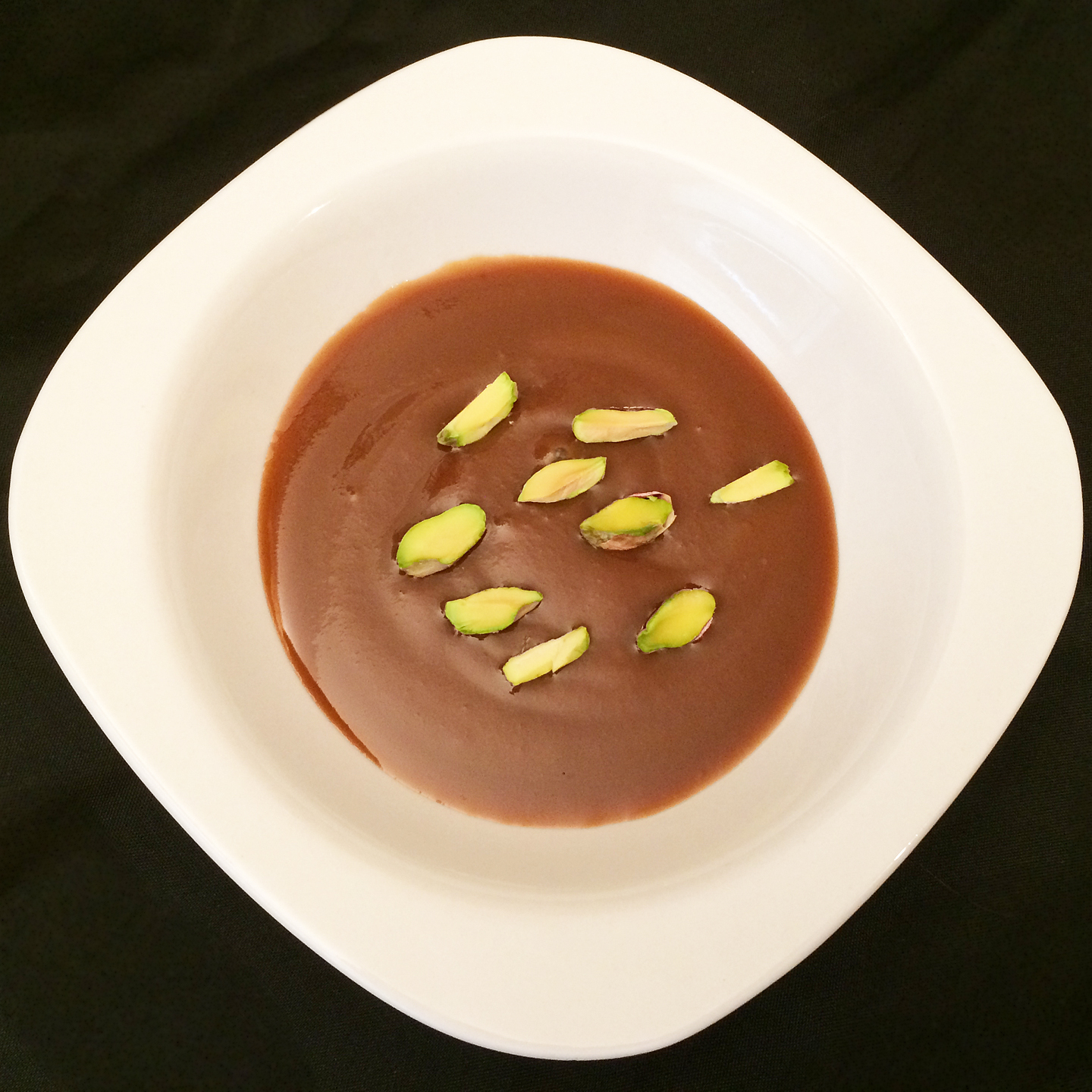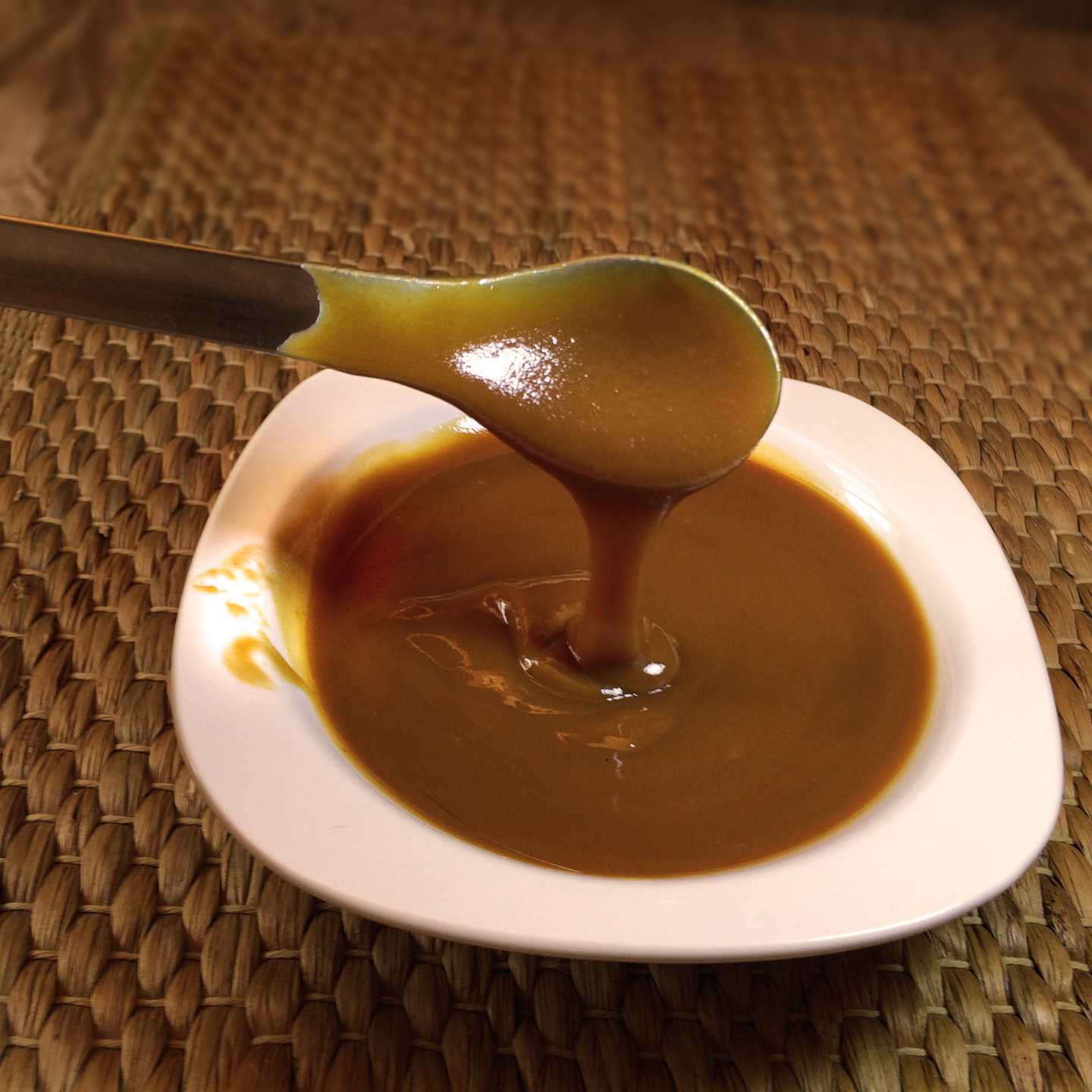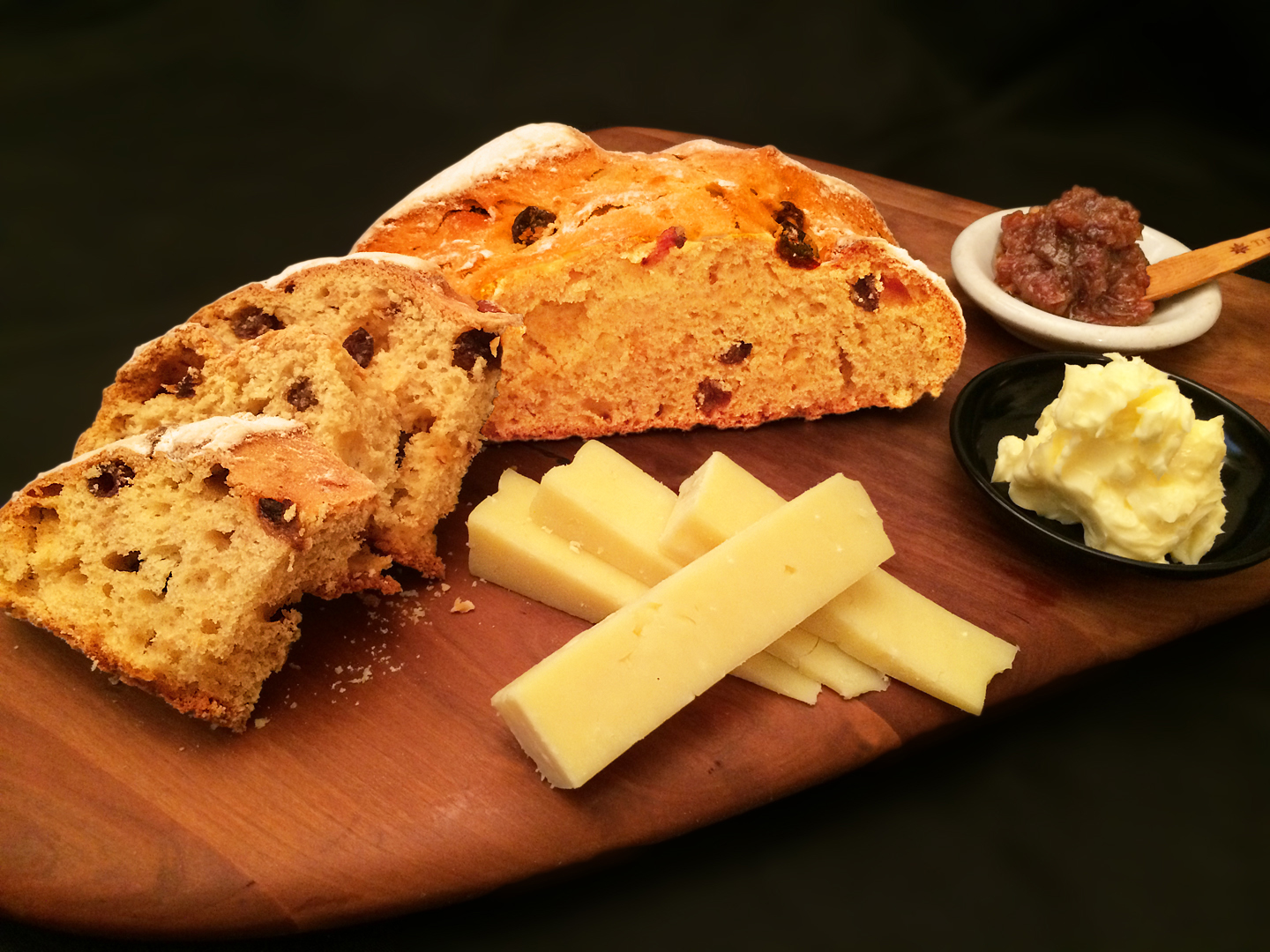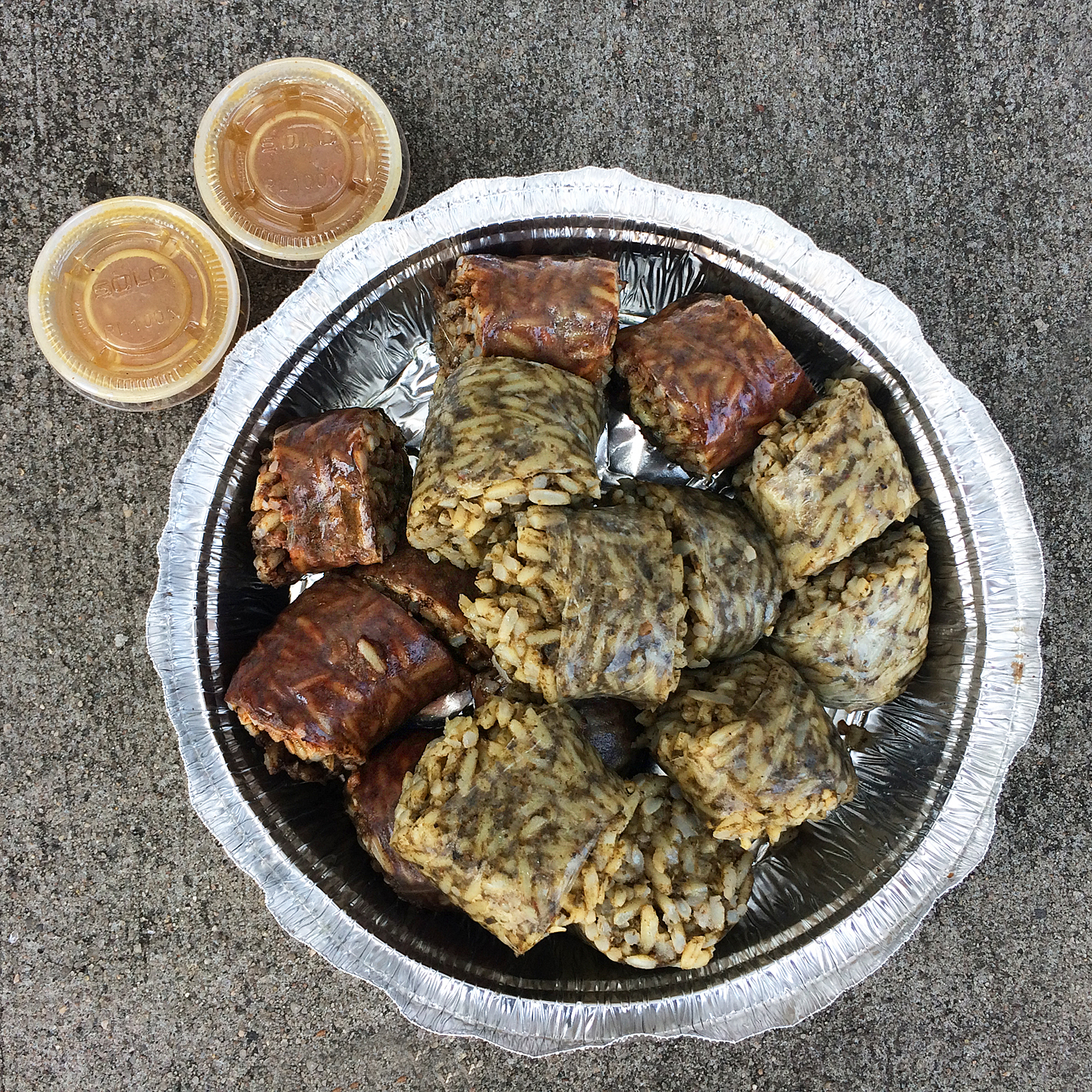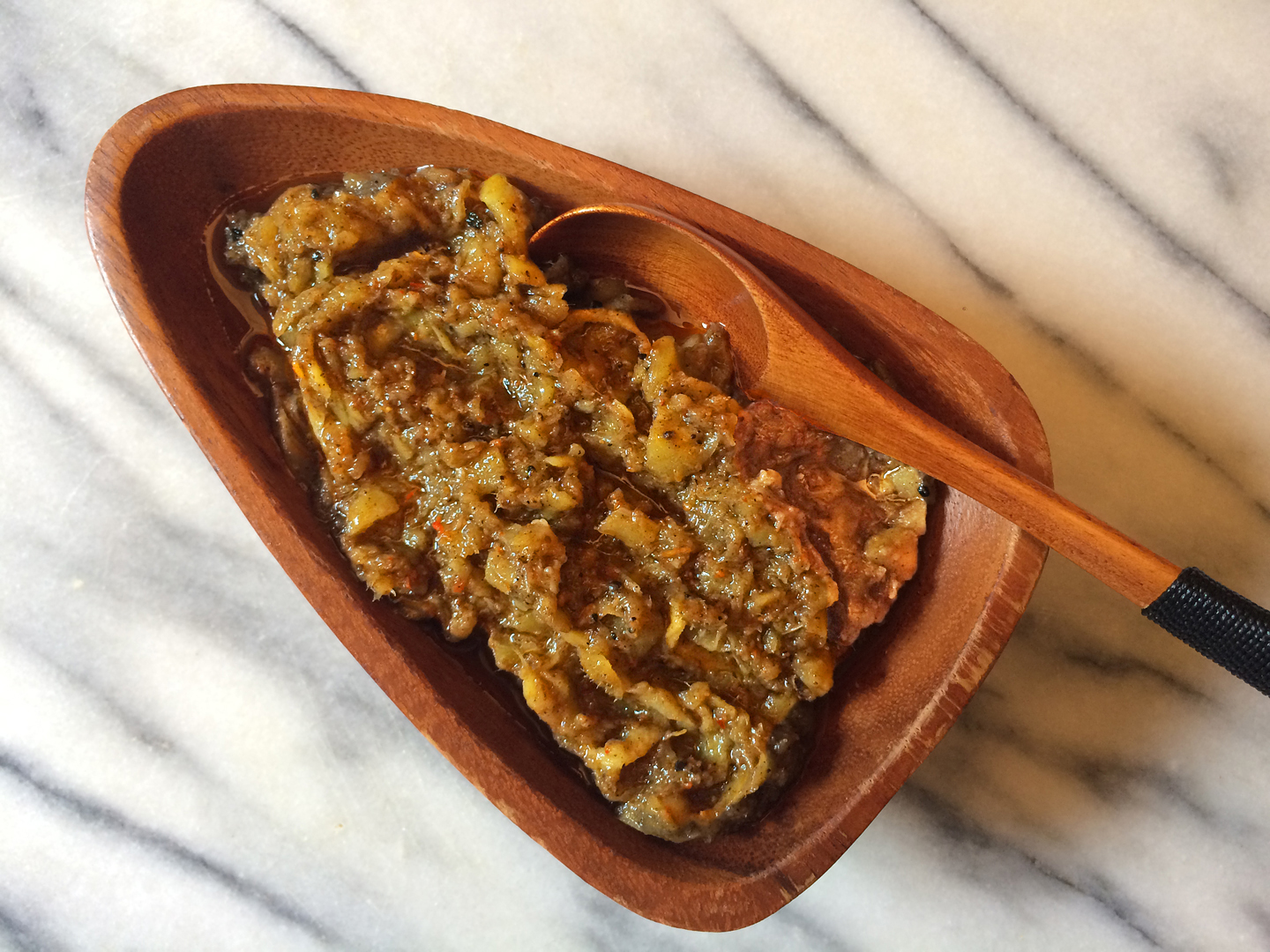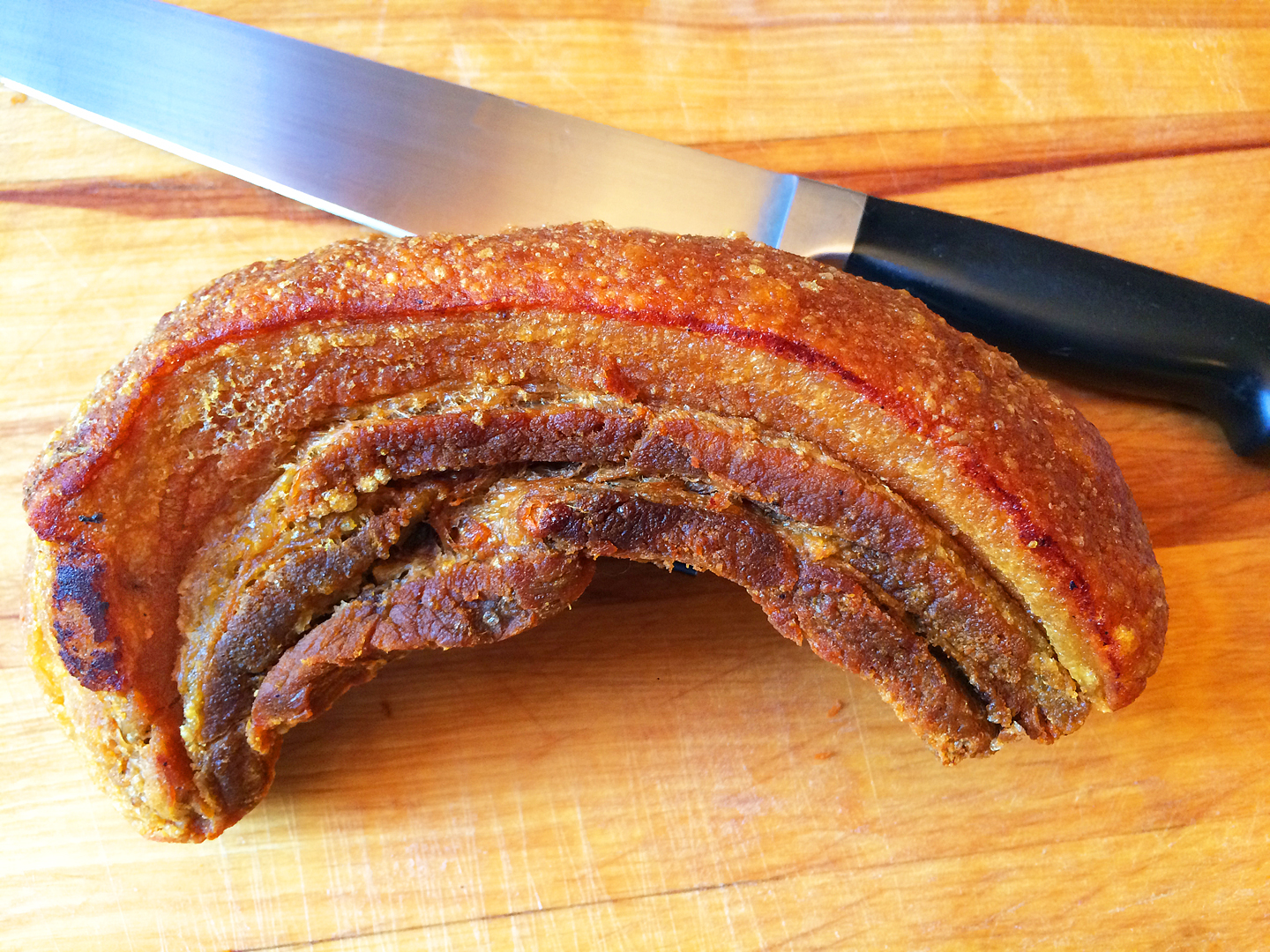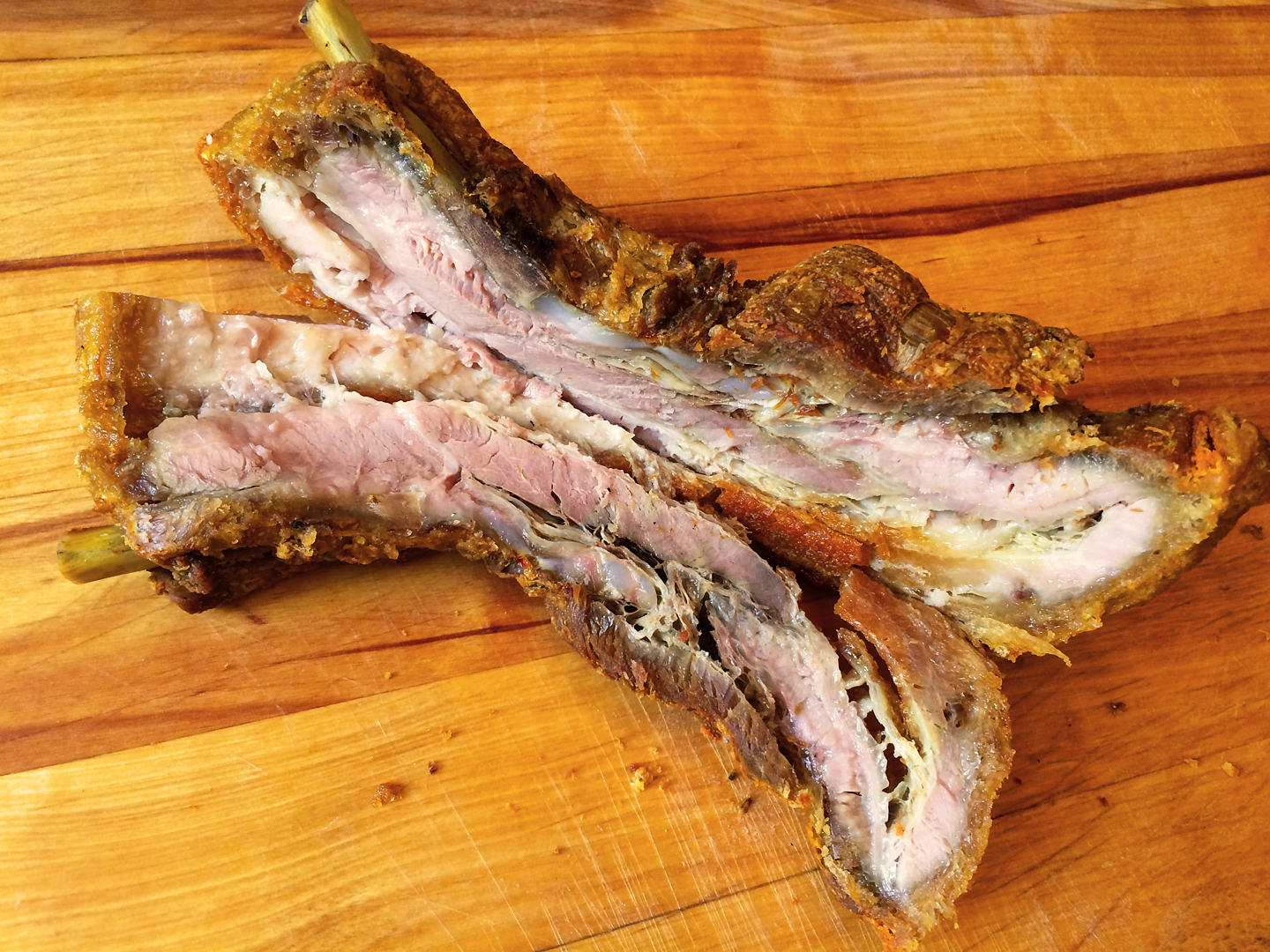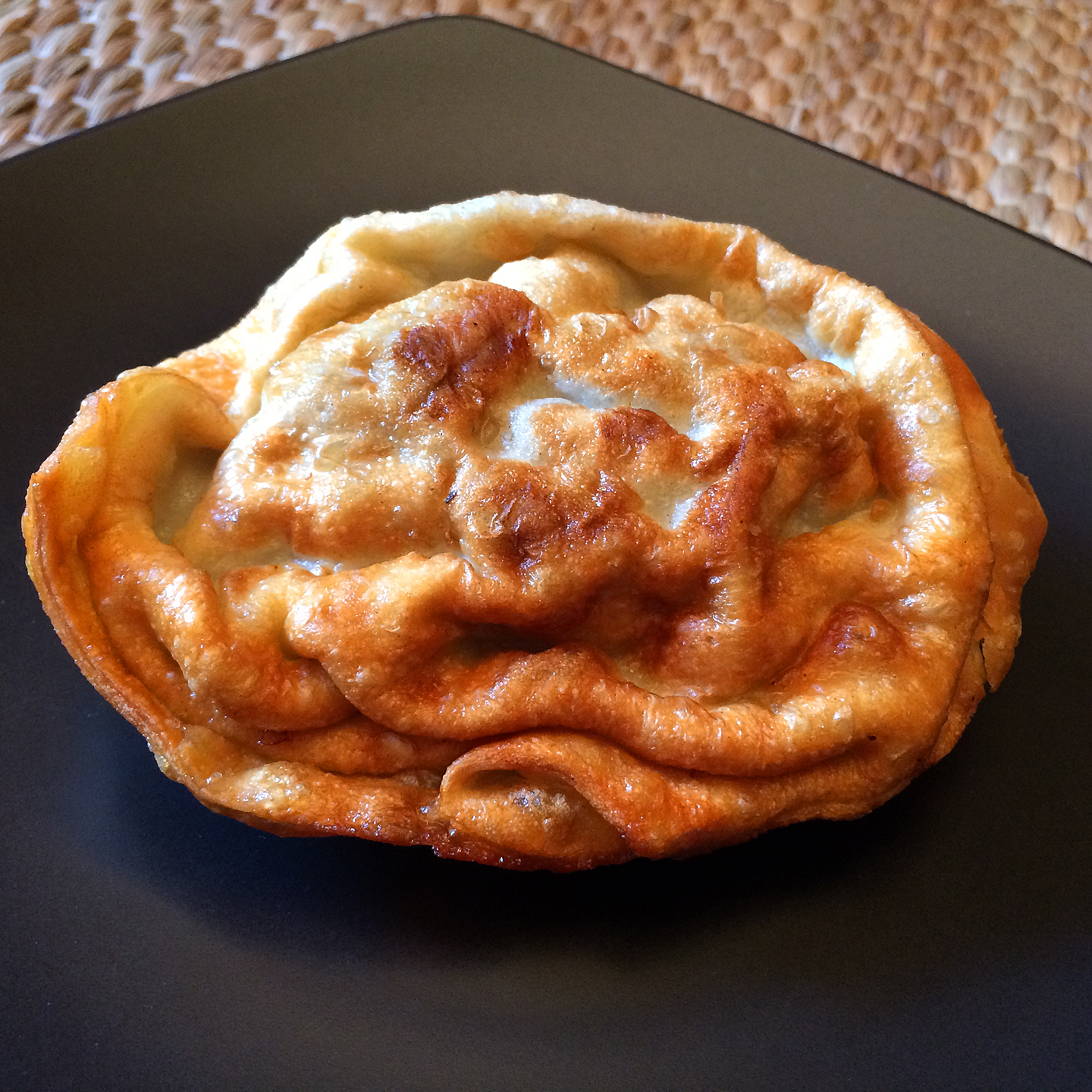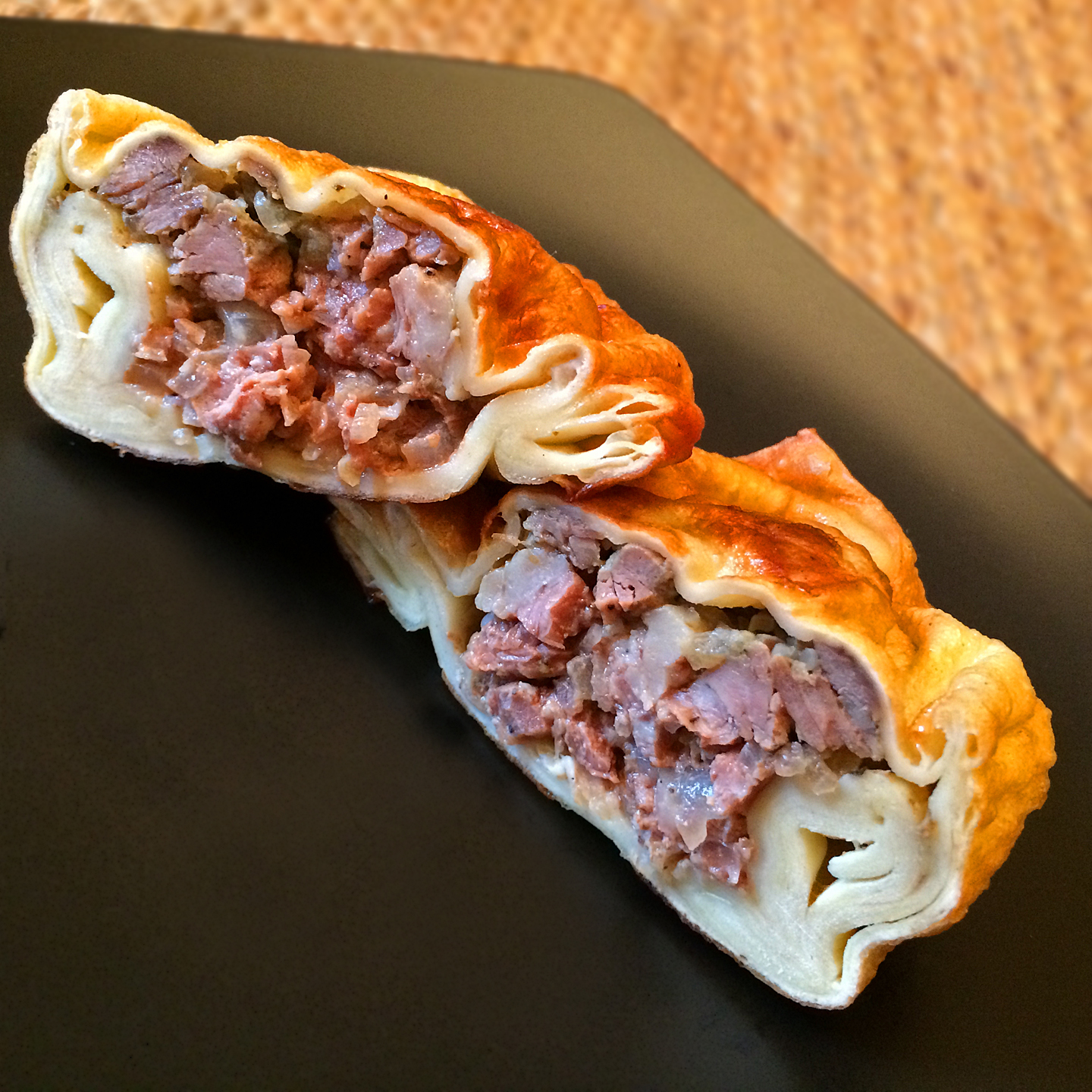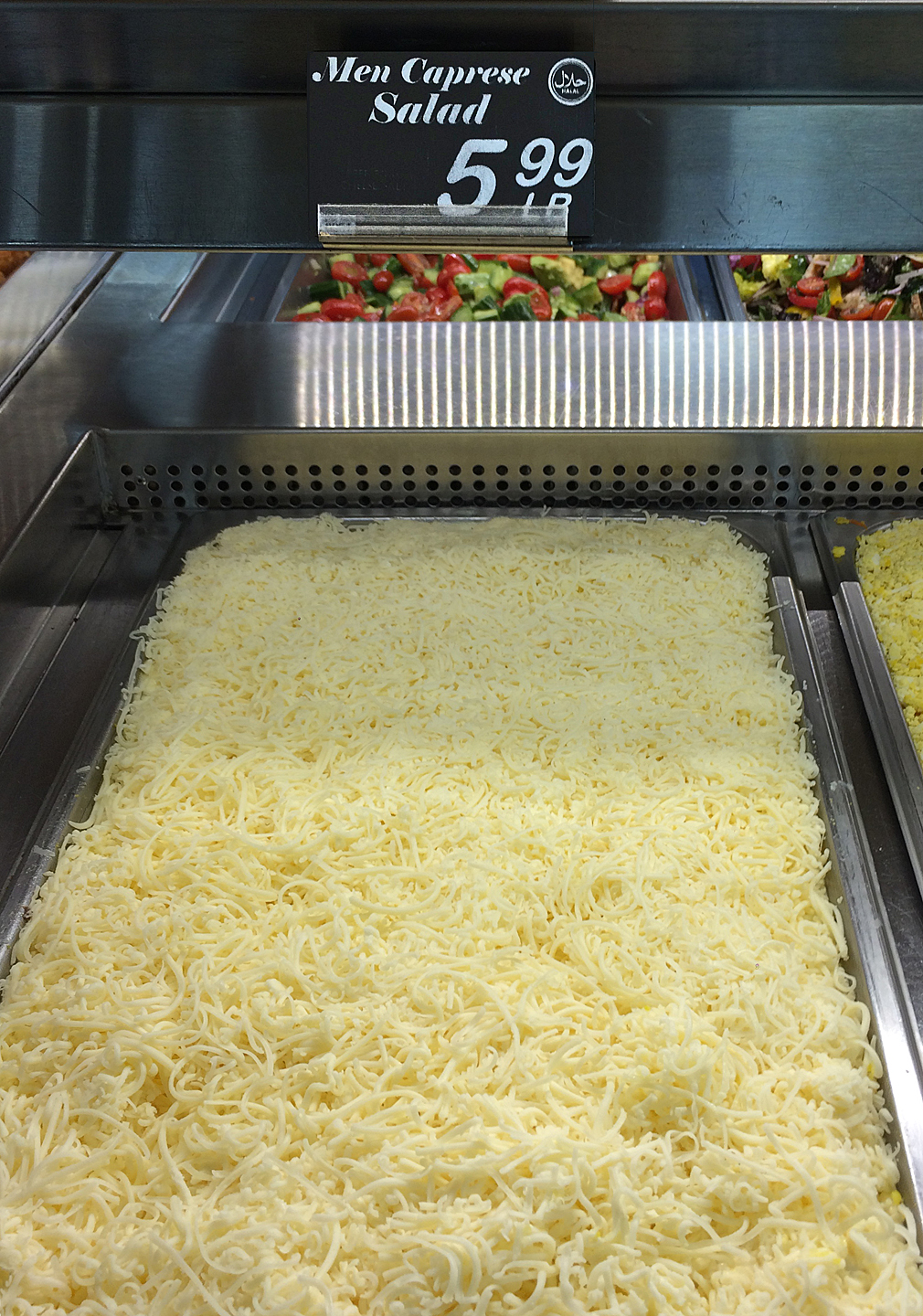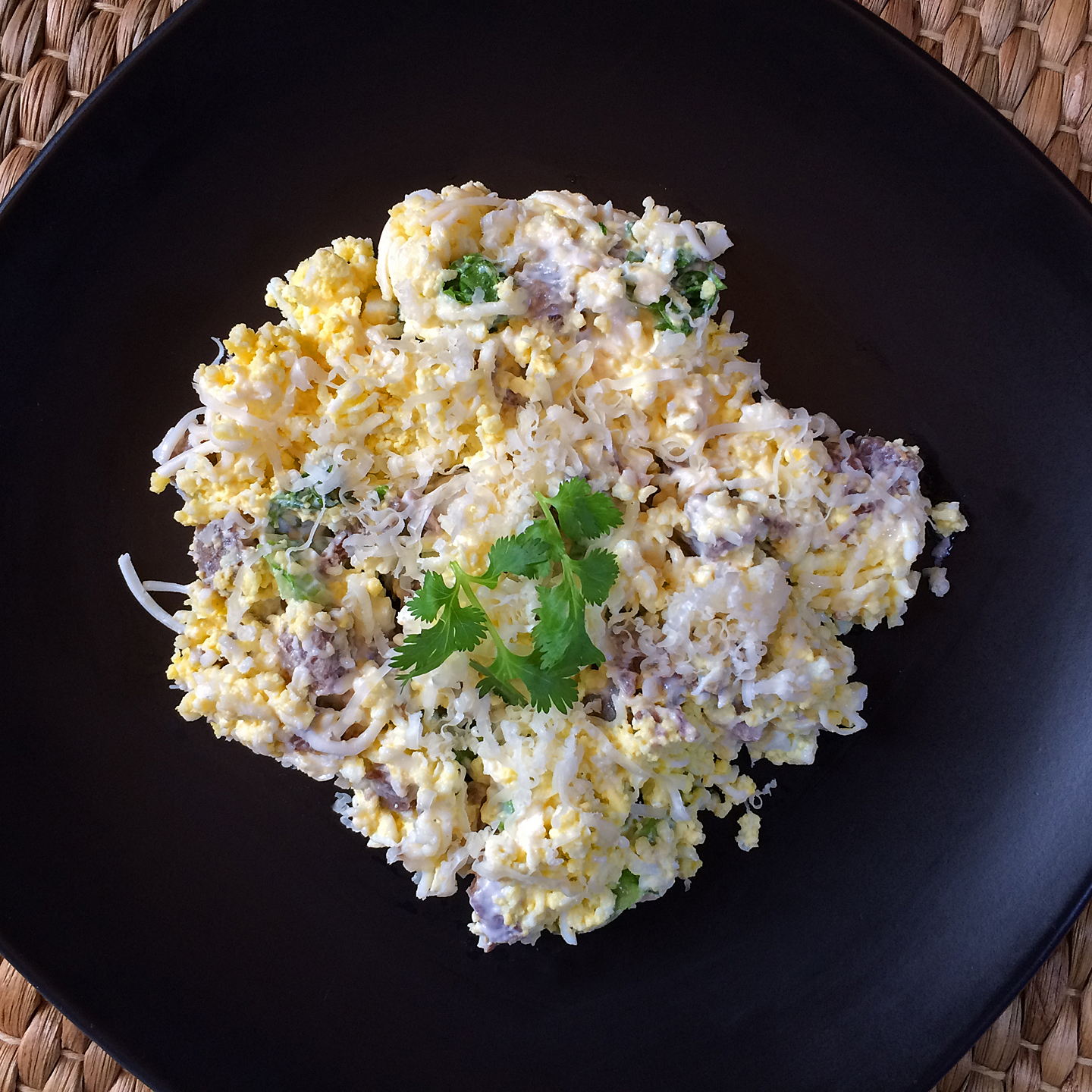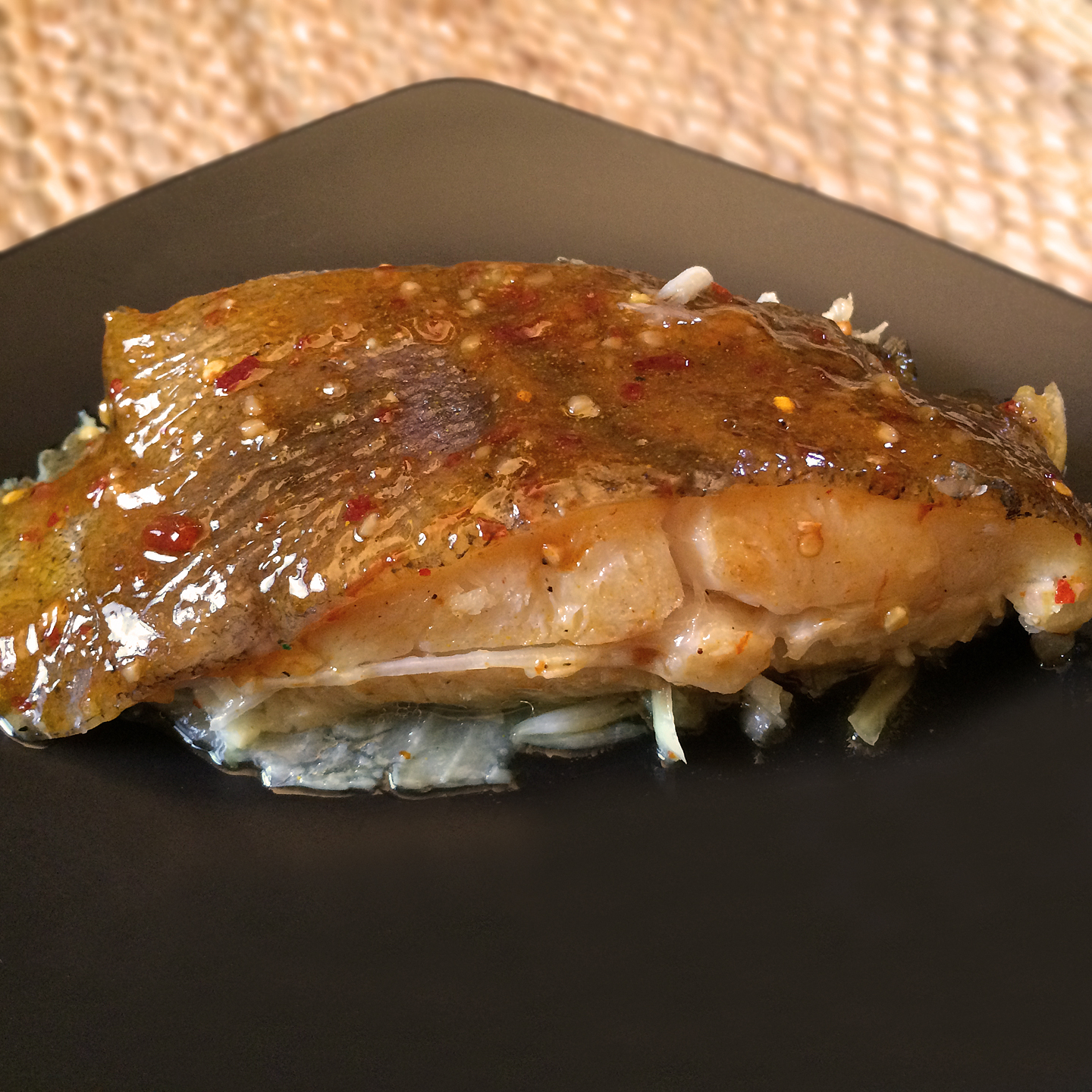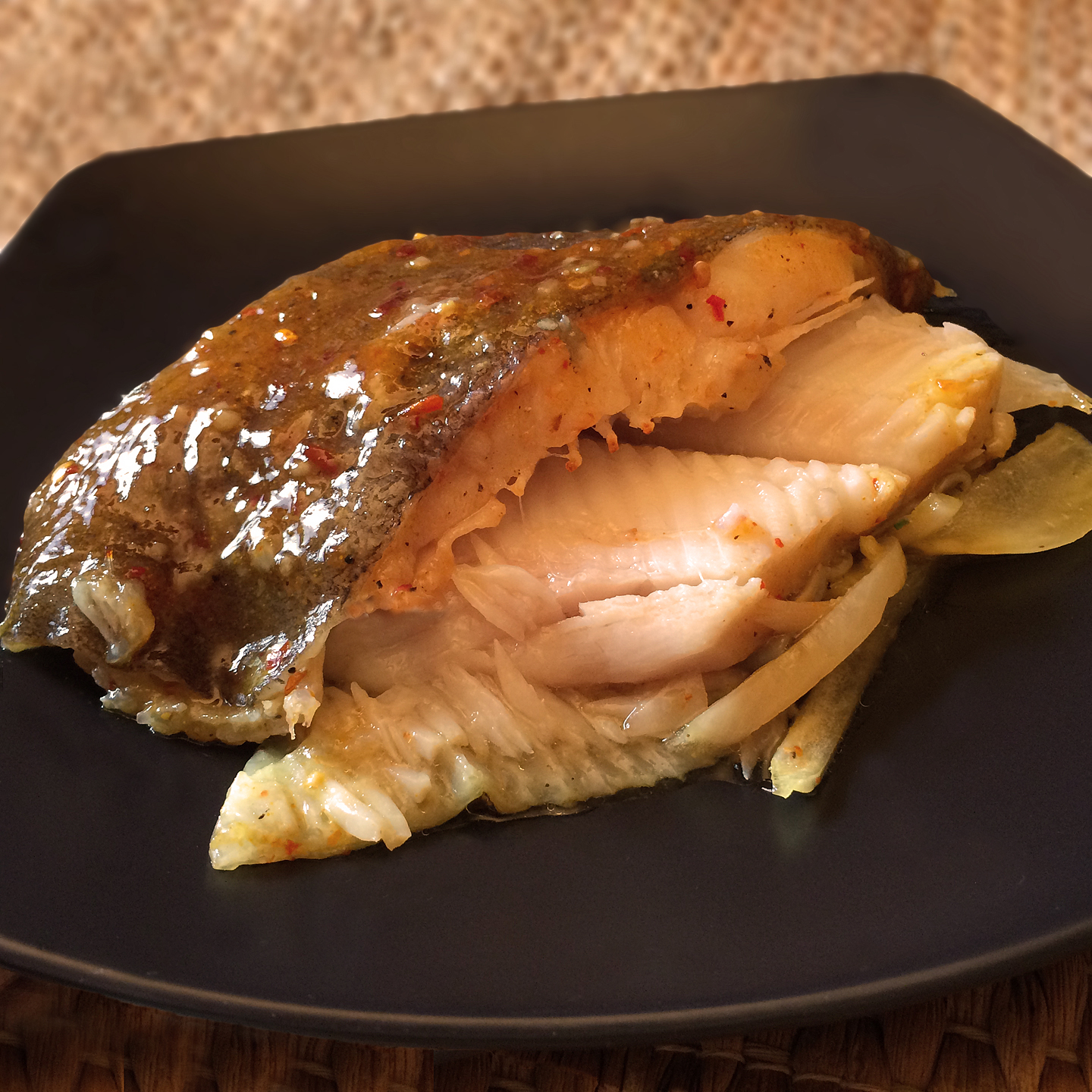(Click on any image to view it in high resolution.)

I’ve been doing food tours in Brooklyn’s Brighton Beach neighborhood for so many years that by now, notwithstanding the vicissitudes of hurricanes called Sandy and pandemics called COVID, I know Little Odessa like a second home. Consequently, there’s not a lot about the vast array of Eastern European, Central Asian, and Russian cuisines that leaves me stumped. But happily, every exploration brings some kind of surprise and a recent visit brought this one:
Each of the numerous markets offering prepared food presents a different roster of dishes. One of them (come on my Little Odessa ethnojunket and I’ll take you there 😉) had an unfamiliar item in the cold salad section. The sign read “спаржа,” the word for asparagus.
I caught the eye of the woman behind the counter. “The sign says ‘sparzha,’ but that looks like bean curd skin; is it bean curd skin?” I asked expectantly.
“You can read this?” she replied, avoiding my question. “I give you a taste.”
On this ethnojunket, we sample a broad range of culinary specialties. One of them is that of the Koryo-saram, people who in the 1920s and 30s fled from Korea to Russia when Japan occupied their homeland and who were subsequently moved to Uzbekistan and Kazakhstan by Stalin; they adapted their cuisine to whatever was available there. Turns out this is another one of the dishes they created. (More about that – and why it’s called asparagus – on the tour.)
It is indeed bean curd skin, known as соевая спаржа, soy asparagus. In Central Asian cuisine just as in that of East Asia, it doesn’t impart a lot of flavor but it does provide a little chew – texture is its prime directive here. Fresh dill and a light dressing inform the dish but do not overwhelm it; the carrot is for color.
I’d consider it a side, certainly not a main. As a matter of fact, IMHO it would be a perfect foil for khe – think spicy Korean ceviche – which we sample on the tour as well.
Hope to see you soon!

